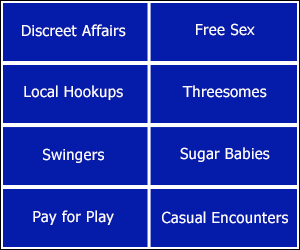The American Sexual Health Association is a trusted source of reliable information on sexual health and sexually transmitted diseases/infections.
AND:
Color Atlas & Synopsis of Sexually Transmitted Diseases, Third Edition [2011], by H. Hunter Handsfield,MD, Clinical Professor of Medicine at the University of Washington Center for AIDS and STD, is a clinical guide of up-to-date information on diagnosis, tests and treatments for sexually transmitted diseases. The third edition offers an outline presentation that features color photographs of each STD, from the authors extensive personal collection, accompanied by a concise overview of epidemiology, clinical manifestations, diagnosis and management, and prevention.
While written primarily for the clinician, Color Atlas & Synopsis of Sexually Transmitted Diseases, Third Edition also can serve as a visual aid in counseling patients and will be useful to many health educators, clinic managers, and health administrators. Additionally, this book also is designed in part for persons with STDs or at risk, many of whom will find it useful in understanding their own infections, assessing their risk, or judging the importance of symptoms that may require clinical assessment.
H. Hunter Handsfield,MD is also one of two doctors who specialize in answering questions about STIs / HIV in the doctors' forum on this web site:
All questions will be answered by H. Hunter Handsfield, M.D. or Edward W Hook, MD. both of whom not only actively treat STIs / HIV AIDS but are epidemiologists = a branch of medical science that deals with the incidence, distribution, and control of disease in a population. Therefore, both are well versed in not only CAN you acquire an STI/HIV by certain sex practices but also HOW LIKELY you are to get it, i.e., the RISK [ e.g., low, high, 1 in 50, once in a 1000 ] for this particular form of sexual activity.
Here's a recent sample:
Q: “Hello Dr's, I posted this question to the free forum On August 20th I was in Vegas for a bachelor party. My friend and I hired an escort to come back to our room. Both of us gave her unprotected oral sex and she gave both of us unprotected oral sex. Afterwards we had protected sex. After we were done I notice some blood on the towel we used to clean up with, unfortunately I cannot remember when the blood appeared since we used it a couple of times throughout the night. I know there is a risk for all STD's in this situation but I am absolutely freaking out! Google is not my friend in this situation! So my question is what are my risks in general, when is the earliest I can start to get tested? Thank you for any help you can offer “
“A: by H. Hunter Handsfield, M.D. Welcome to the forum. Thanks for your question.
This was a low risk event from the standpoint of all STDs. First, since your escort partner uses condoms, it is relatively unlikely she has any active STD. Second, oral sex is quite safe -- not entirely risk free, but with much lower rates of STD transmission than unprotected vaginal or anal sex: no measurable risk of some STDs (HIV, chlamydia, HSV-2) and low risk for others (gonorrhea, nongonococcal urethritis [NGU], HSV-1, syphilis). Third, all STDs are transmitted inefficiently -- i.e. when one partner is infected, during most exposures the infection is not transmitted. Finally, blood on the outside of a condom, on the skin, and even in the mouth does not appreciably elevate the risk.
Based on the overall low risk, I would have recommended against any need for any testing at all. But since you have started: The urine tests for gonorrhea and chlamydia are reliable any time more than 2-3 days after exposure. Syphilis and HSV blood tests require 6 and 12 weeks, respectively -- so if you really feel you need such testing despite virtual absence of risk, you'll need to repeat them at those times. But I really see no need.
I would have definitely recommended against an "early detection" HIV test, which most likely was a PCR test for HIV DNA/RNA. It's expensive and the chance of HIV in this setting was truly zero or very close to it. If you felt you needed the reassurance, having a standard HIV antibody test at 6-8 weeks, or a "duo" test (HIV antibody plus p24 antigen) at 4 weeks would be preferable. That said, a negative PCR test at this time (10-14 days after exposure) will be around 90-95% reliable. You'll still need one of the other tests in a few weeks if you need the security of a 100% reliable negative result.
In any case, stay mellow as you await results and/or the time for additional testing. If I ever found myself in such a circumstance, I would not be tested for anything and would continue unprotected sex with my wife without fear of infecting her with anything.
I hope this has helped. Best wishes-- HHH, MDâ€


Geee, thanks for the PSA, joker/windbag.